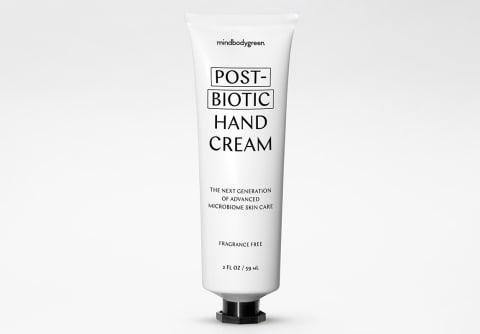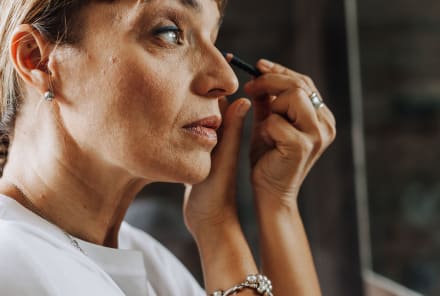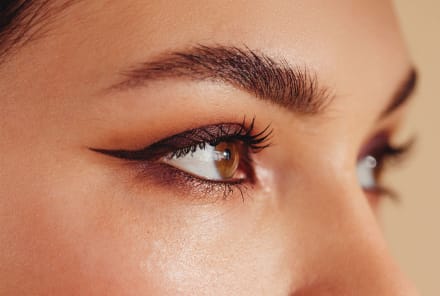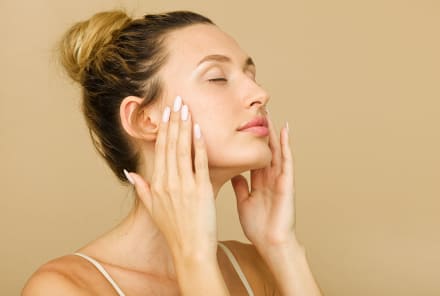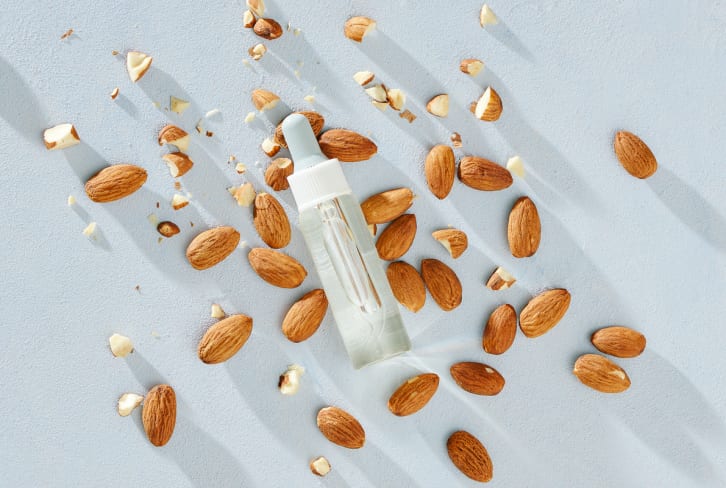Advertisement
The Dermal Layer Of The Skin On The Hands Thins With Age — Here's What To Do

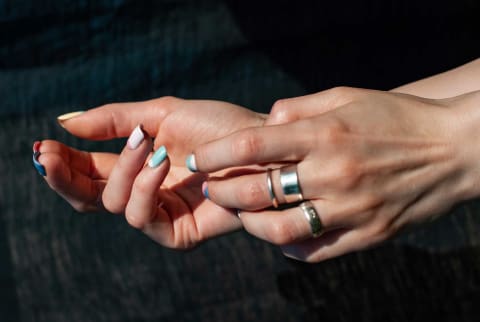
The skin's dermal thickness varies across the body. Some areas are thick and robust—like on the shoulders and trunk—so the skin is more durable.
In others, the dermal layer is thin and delicate—like the eyes, lips, and even the back of the hands.
The connection between dermal thickness & crepey skin on the hands
Perhaps not so coincidentally, these areas of thin skin on the face and body tend to be the areas that show the first visible signs of aging skin. This is because dermal thickness is incredibly important for skin health and appearance. The skin is made up of three layers1, the middle of which is the dermis.
This layer contains all of your skin's connective fibers, structural proteins, and other extracellular components and is incredibly important for keeping skin structure firm, smooth, and vibrant.
Much of what we do in skin care and aesthetics is to support this layer—such as encouraging collagen and elastin production and protecting the skin from oxidative damage.
When this layer thins or atrophies, the skin will appear crepey, fragile, and prone to wrinkles and even bruises easily. In fact, "crepey skin" is simply a term we use to describe this exact phenomenon of the dermal layer thinning: "Skin 'crepiness' is commonly used to describe aging skin that appears thinner, has lost elasticity, and is more fragile, often with wrinkles," board-certified dermatologist, dermatologic surgeon, and founder of Spectrum Skin and Laser Jeremy Brauer, M.D., previously told us about crepey skin.
3 things that trigger dermal thinning on the hands
The dermal layer is made up of collagen and elastin. When these decline, so does the dermal density.
If you're curious about what triggers this loss and thinning to begin with, here are the top culprits:
- Sun damage: Unprotected UV exposure is the No. 1 cause of visible signs of aging, accounting for up to 90% of all premature aging and damage2.
- Natural collagen loss: Collagen and elastin naturally decline with age, which typically starts at some point during the mid-20s. Essentially, the amount of collagen the body is able to produce slows, and it's not able to replenish collagen loss. This happens at a rate of about 1% every year3.
- Irritating skin care: Skin can also thin due to irritating skin care routines and habits. Irritation causes inflammation in the skin, which damages the barrier and collagen. When barrier damage occurs, skin becomes more fragile and thin. The hands are especially prone to this as they experience more manual wear naturally (than, say, the face). Plus, hands are exposed to more irritating formulas on a regular basis, be it harsh soaps, sanitizers, cleaning products, and so on.
How to support the skin on the hands
Caring for the skin on the hands is not much different from caring for skin on the face—just with a few tweaks given the unique needs of the hands.
The first step is to make sure you're protecting the skin with sunscreen during sun exposure. A few application tips to make sure you remember:
- After applying sunscreen to the face, apply a dime-sized amount to the back of the hands.
- Keep a travel-sized sunscreen with you to reapply throughout the day.
- Always apply sunscreen before driving, as the windshield glass doesn't block UVA rays.
- Wear gloves when doing yard work, which will protect the skin not only from UV exposure but from physical damage.
Then be sure to support skin through barrier-strengthening and collagen-boosting routines.
When possible, switch to gentle, sulfate-free hand washes. Sulfates can strip the skin of its natural lipids, leading to a weakened barrier and increased inflammation. In the long run, this will thin out the dermal layer.
Look for nonirritating surfactants instead, such as Sodium Lauroyl Methyl Isethionate, Sodium Cocoyl Isethionate, or Cocamidopropyl Betaine. Ideally, the hand wash will also have hydrating, soothing buffer ingredients like aloe, oat oil, glycerin, coconut oil, and so on.
Throughout the day, be sure to apply a hand cream regularly to support hydration, soothe irritation, and feed the skin antioxidants. A good hand cream can not only protect the dermal layer, but it can provide plumping hydration to ease the appearance of fine lines and crepey skin in the interim.
Look for options that have a robust formula, including barrier-strengthening emollients (oat oil, ceramides, moringa seed oil, etc.), moisture-trapping occlusives (shea butter, avocado oil), humectants (hyaluronic acid, aloe vera, glycerin), and antioxidants (coenzyme Q10, fruit extracts, vitamin E, etc.).
Editor tip:
At night, you may want to incorporate something more targeted to boost collagen, such as retinol, vitamin C, or glycolic acid. These ingredients have all been shown to increase collagen in the skin when used regularly.
However, these ingredients can be challenging to tolerate and shouldn't be applied multiple times a day (as you might with a normal hand cream), so we encourage using them in the evening as a treatment alongside your daily hand cream and sunscreen.
The takeaway
Thinning skin on the hands—often simply called "crepey skin"—is a common issue for many, especially with age. It's caused by dermal thinning from collagen and elastin loss, which are triggered by UV damage, topical irritation, and age-related decline.
To help bolster skin, be sure to wear daily sunscreen, use barrier-strengthening hand creams, and use targeted nightly treatments.
Watch Next
Enjoy some of our favorite clips from classes
Enjoy some of our favorite clips from classes
What Is Meditation?
Mindfulness/Spirituality | Light Watkins
Box Breathing
Mindfulness/Spirituality | Gwen Dittmar
What Breathwork Can Address
Mindfulness/Spirituality | Gwen Dittmar
The 8 Limbs of Yoga - What is Asana?
Yoga | Caley Alyssa
Two Standing Postures to Open Up Tight Hips
Yoga | Caley Alyssa
How Plants Can Optimize Athletic Performance
Nutrition | Rich Roll
What to Eat Before a Workout
Nutrition | Rich Roll
How Ayurveda Helps Us Navigate Modern Life
Nutrition | Sahara Rose
Messages About Love & Relationships
Love & Relationships | Esther Perel
Love Languages
Love & Relationships | Esther Perel
